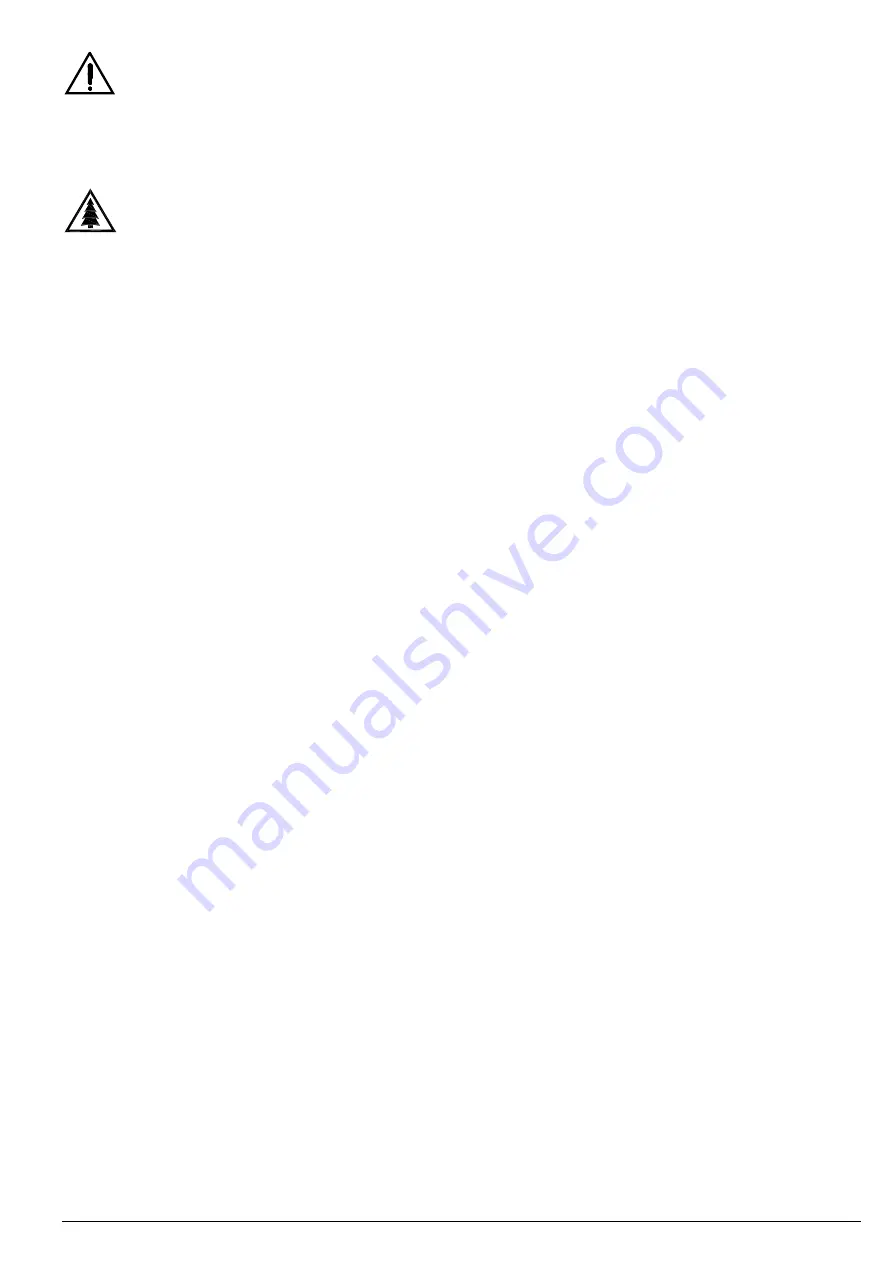
Operating manual liquid ring vacuum pumps and compressors series TRH - TRS - TRM - TRV - SA & Systems type HYDROSYS - OILSYS
11
7.3 - INSTALLATION SCHEMATICS FOR LIQUID RING VACUUM PUMPS
CAUTION!
Possible contact with hazardous media and hazardous substances, cold or warm. Operate only provided with
apposite protective devices.
The working principle of the vacuum pump requires a continuous flow of fresh and clean liquid that enters the pump at
the service liquid connection identified by the letter Z (see chapter 7.11). The liquid is discharged together with the
handled gas through the pump discharge flange.
Dispose the waste liquids according to the current regulations protecting the environment. The obtained liquid-
water mixture must be collected and, according to the environmental disposal regulations, treated as special
liquid.
The quantity of said liquid will vary with pump size and degree of working vacuum (see performance curves and/or tab. 2).
The service liquid absorbs the compression heat generated by the pump compression therefore its temperature will rise
by some 3-4°C (for additional information see chapter 19).
There are three basic installation schematics listed below that may be considered, depending upon the quantity of
service liquid that is desired and possible to be recycled.
7.3.1 - Service liquid: Once-through system (no recovery)
All the service liquid is supplied from an external source. The liquid is separated from the incoming gas in the discharge
separator and is totally drained.
This is the most common installation scheme and can be applied when it is available an abundant constant flow of fresh
liquid and/or when the liquid contamination problem never exist.
The service liquid should be supplied at the pump connection with a pressure of 0.4 bar maximum to avoid flooding the
pump with too much liquid. If this is not possible it is recommended to install a reservoir fitted with a float valve, this tank
is supplied with the liquid that is then pulled by the pump as required by the operating conditions.
The liquid level in the reservoir should be approximately at the pump shaft centreline.
Schematic fig. 6 illustrates the once-through system.
7.3.2 - Service liquid: Partial recovery system
This type of installation is used where it is desired to minimise the use of fresh service liquid (for calculations see
chapter 19).
The service liquid enters and leaves the pump same as the once through system, however part of the liquid is recycled
from the discharge separator and the balance is continuously supplied from an external source. The excessive liquid is
drained through the separator overflow connection: take care of its possible disposal according to the laws into force
and to a safe local environment management.
The temperature of the mixed liquid supplied to the pump will be higher than the temperature of the make-up liquid. Its
final temperature will depend upon the amount of the recycled liquid.
It is important to remember that with higher service liquid temperature the pump performance will decrease (see chapter
19) with the possibility of operating the pump in the cavitation area.
When the separator/reservoir is installed along side of the pump (type HSP), its liquid level should not be above the
pump shaft centreline.
When flanged separators (type HSF) are mounted on the pump discharge flange, the liquid level is automatically
maintained by the location of the connections.
Schematic fig. 7 illustrates the system with partial recovery of the service liquid.
7.3.3 - Service liquid: Total recovery system
This system has total recycle of the service liquid without fresh liquid make-up from an outside source.
A heat exchanger is required to lower and control the temperature of the recycled service liquid: for sizing and
calculations of heat loads see chapter 19.
A circulating pump will be required for those applications where the vacuum pump operates for extended period of
times in the pressure ranges above 500/600 mbar or when there are high pressure drops in the closed loop including
the heat exchanger (over approximately 1,5 m).
The liquid level in the separator/reservoir should not be above the pump shaft centreline.
Losses of liquid from the closed loop must be compensated with an equal amount from an outside source.
Schematic fig. 8 illustrates the system with total recovery of the service liquid.


























